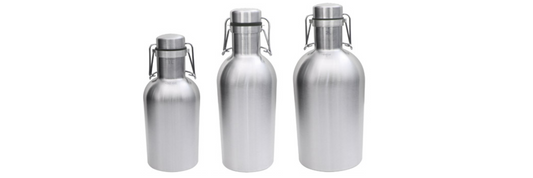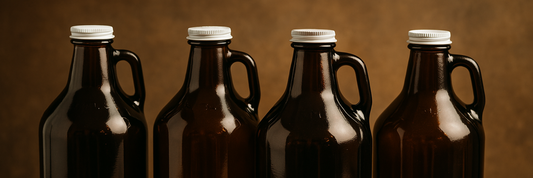In today’s business landscape, sustainability is more than a trend—it’s a requirement. With growing concerns about climate change, resource depletion, and plastic pollution, consumers are more mindful of environmental impacts than ever before. Consequently, companies that prioritize eco-friendly packaging not only contribute to a greener planet but also attract environmentally conscious customers. Among the popular sustainable packaging choices, paper bags and non-woven bags each offer unique benefits and drawbacks. In this article, we will dive into these two options, comparing their environmental impact, usability, costs, and consumer perceptions to help your business choose the right fit.
Why Eco-Friendly Bags Matter
Sustainable packaging can be a powerful way for brands to signal their commitment to the environment. Traditional plastic bags, though widely used, contribute significantly to pollution due to their durability and low recyclability. Eco-friendly bags, in contrast, are designed to reduce this environmental burden. Choosing the right type of eco-friendly bag, however, requires an understanding of factors like recyclability, biodegradability, and the lifecycle impacts of different materials. Both paper and non-woven bags are popular alternatives, but which one aligns best with your brand’s sustainability goals?
Paper bags and non-woven bags are two widely accepted alternatives to plastic bags. Each bag type has its own set of advantages and limitations in terms of environmental impact, durability, and cost. Paper bags, made primarily from recycled or kraft paper, are praised for their biodegradability. Non-woven bags, crafted from polypropylene, offer reusability and durability but are less biodegradable. This article will compare these options to help businesses select the ideal eco-friendly bag.
What Are Paper Bags?
Materials and Composition
Paper bags are made from natural fibers—primarily recycled paper or kraft paper—which makes them highly sustainable. Kraft paper is produced from wood pulp and processed with minimal chemical treatment, keeping its environmental impact lower.
Manufacturing Process
The production process for paper bags involves creating a pulp from wood or recycled paper, which is then pressed, dried, and cut to the desired bag size and shape. Compared to plastic bag manufacturing, this process generates fewer toxic byproducts and has a smaller carbon footprint.
Eco-Friendly Features
Paper bags excel in recyclability and biodegradability. After disposal, they break down quickly in natural environments and do not leave harmful residues. Additionally, paper bags can be recycled multiple times, reducing the demand for virgin materials. For businesses focusing on a low-impact, single-use option, paper bags are a compelling choice.
Common Uses
Due to their low durability, paper bags are often used for lighter items. They are popular in retail stores, grocery shops, and food packaging, where they can be conveniently discarded or recycled after a single use.

What Are Non-Woven Bags?
Materials and Composition
Non-woven bags are generally made from polypropylene, a type of plastic that can be spun into fabric-like sheets through a process called spun-bond technology. This material provides strength and resilience, making non-woven bags highly durable and capable of bearing heavier loads.
Manufacturing Process
In producing non-woven bags, polypropylene fibers are melted and then spun onto a flat surface where they are bonded together to form a sturdy fabric. This method yields a versatile, lightweight material that can be fashioned into various bag sizes and shapes.
Eco-Friendly Features
Non-woven bags offer eco-friendly features mainly in their reusability. Although they are not biodegradable, these bags are designed for multiple uses, which extends their lifespan and reduces overall waste. They are also recyclable, though recycling facilities for polypropylene may be limited in some areas.
Common Uses
Non-woven bags are frequently used as shopping bags, promotional bags, and multi-purpose carry bags. Businesses favor these bags for their longevity and customizability, making them ideal for brand visibility and customer retention.

Comparing Paper Bags vs. Non-Woven Bags
Environmental Impact
- Paper Bags: As biodegradable and fully recyclable products, paper bags break down naturally over time, causing minimal harm to the environment. However, their single-use design and limited durability mean they often need to be produced in higher quantities, leading to more frequent resource consumption.
- Non-Woven Bags: Non-woven bags are non-biodegradable but highly reusable. While they are made from plastic, their long lifespan reduces the need for frequent replacements, which can offset some of the environmental impacts associated with production. However, proper disposal is essential to prevent these bags from contributing to plastic waste.
Durability and Reusability
- Paper Bags: While ideal for single-use and carrying lightweight items, paper bags can tear when subjected to heavy loads or moisture, limiting their reusability.
- Non-Woven Bags: These bags are highly durable, capable of withstanding multiple uses and carrying heavy items. Non-woven bags are a preferred option for businesses that prioritize longevity and practical value.
Aesthetic Appeal and Customization
- Paper Bags: Known for their natural, earthy appeal, paper bags can be easily customized with logos, colors, and other branding elements. This makes them a great choice for brands that want to convey an organic or artisanal image.
- Non-Woven Bags: Non-woven bags offer diverse customization options, including a wide range of colors and branding choices. They are ideal for businesses that want their logo and design to stand out on a durable, reusable product.
Cost Efficiency
- Paper Bags: For single-use purposes, paper bags are generally more cost-effective. Their production cost is typically lower than non-woven bags, which makes them an affordable option for businesses focused on one-time use.
- Non-Woven Bags: Non-woven bags have a higher upfront cost but can be more economical over time due to their reusability. For businesses with long-term sustainability goals, this makes them a better investment.
Consumer Preferences and Perception
- Paper Bags: Many consumers associate paper bags with eco-friendliness due to their recyclability and biodegradability. This positive perception makes them attractive for brands that want to emphasize environmental responsibility.
- Non-Woven Bags: Consumers value non-woven bags for their durability and convenience. These bags are often kept and reused, which reinforces brand visibility and fosters customer loyalty.
Which Bag Should You Choose?
Consider Business Needs
When deciding between paper and non-woven bags, take into account your business’s budget, environmental goals, and customer preferences.
Ideal Scenarios for Paper Bags
Paper bags are best suited for businesses that focus on low-cost, single-use applications and want to emphasize a natural, eco-friendly message.
Ideal Scenarios for Non-Woven Bags
Non-woven bags are a good choice for businesses that prioritize durability, reusability, and brand visibility. These bags are ideal for retail, trade shows, and promotional events where customers are likely to reuse them.
Conclusion
Selecting the right eco-friendly bag is a strategic decision that reflects your brand’s values and commitment to sustainability. Paper bags are affordable, biodegradable, and convey a strong eco-friendly image, making them ideal for one-time use and lightweight items. Non-woven bags, on the other hand, offer longevity, durability, and extensive branding options, making them ideal for businesses that prioritize reuse and visibility. If you’re looking to make the switch to eco-friendly packaging, reach out to KimEcopak today for expert guidance and a range of sustainable bag options tailored to your business need









